Chronic Bike Seat Discomfort – Beyond Bike Fit. Beyond Riding Technique.
I have written about fit and comfort based challenges riders experience with their bicycle seats more than a couple times. I keep writing these articles as chronic bike seat discomfort is a very common problem and some riders have chronic issues regardless of what is done with saddle selection, bicycle fit or technique recommendations. I find it frustrating when I can’t help solve someone’s issue on the bike; I always want to figure out the cause and a solution. I thus spend a lot of time thinking about chronic saddle issues. This article peels back yet another layer of the many causes of saddle discomfort on the bike.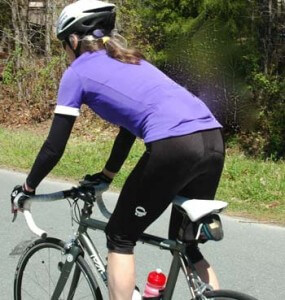
“A Good Bike Fit Didn’t Solve My Bicycle Seat Pain. Now What?”
In a Fit Werx bike fitting, we spend a substantial amount of time “coaching” on postural elements that can help you reach your potential and find greater comfort on the bike. Why? Because a well fit and set-up bike can’t work to its potential without the rider interacting with it properly. In other words, what you do on the bike is as important as how your bike is set-up.
Equipment can help, but equipment in itself can only patch deficiencies, not solve them. In golf, an over-sized driver may make it easier for you to drive the ball farther, but the only way you are going to drive like a pro is to have technique that is similar to a pro. Cycling is no different and that is the crux of the article we published last year. If you have a good bike fit and have gone through a slew of saddles without relief, the issue is likely not equipment and set-up related. This leaves technique and posture.
“I Understand the Concepts behind Proper Posture on the Bike. I just can’t do it though. What am I Missing?”
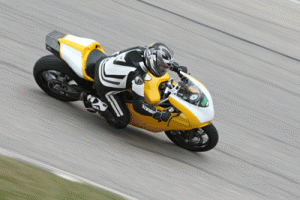
I empathize with you. While I haven’t had chronic saddle discomfort on a bike, I have experience with biomechanical based technique deficiencies riding motorcycles and playing tennis. Whenever I received advice for either, I was told to use my pelvis and core different than I do. However, no matter how hard I tried, I was either physically unable to do what was recommended or it caused pain. For example, on a motorcycle, I physically couldn’t keep my hip square and my weight off the handlebar in a right turn. Square hips and keeping weight off the bars are the basis of balance and traction on a motorcycle at lean.
After years of frustration feeling like I just couldn’t do certain things, and realizing I often felt better when I was less physically active, I concluded that I either had a chronic disease or that I had a biomechanical limitation. Not wanting to think the worst, I became convinced that a poorly rehabbed ankle sprain from 1998 was the most likely culprit to my limitations and back issues. I changed my gait patterns so that I could function during recovery from the sprain and those new patterns came at the expense of alignment, mobility and muscle function. After years of declining performance and comfort trying to manage limitations, I started working with a group of postural rehab specialists this winter to proactively try to correct these issues.
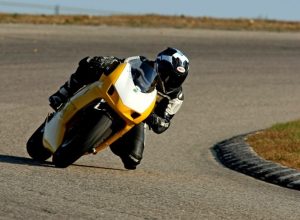
Four months in, I’ve got a ways to go, but I’m feeling physically better than I have in fifteen years. At my first track day this year, I finally made a right turn with the correct body position. The result? My lap times dropped almost five seconds in a day (the equivalent of gaining about 50 watts of average power on a bicycle overnight…). As an added benefit, I can now put my daughter into her crib without stabbing back pain and instability. Now to work on that backhand…
What does this have to do with your comfort on a bicycle seat? If you have read articles on how to sit on a bicycle seat properly and have been through a good fitting and feel like you just can’t do what is recommended, a biomechanical limiter could simply be preventing you from sitting on the seat in a way that allows you to be comfortable.
What are Some Symptoms of Biomechanical Limiters that Lead to Bike Seat Discomfort?
I recently fit a rider suffering from chronic saddle issues. No matter what we did, he either felt too much pressure on the front of the saddle or too much pressure on the rear – sometimes both at the same time. While there are saddles designed to try to address many comfort and technique issues, I’m pretty sure there is no saddle shape, chamois, or bike positioning change that can solve such simultaneous issues.
I saw in some of the physical assessments we did that he naturally used his back extensors more than his core to support his upper body and that his pelvis was forward. The videos and saddle scan we took on the bike verified a similar pattern. A rider with an overly rotated pelvis is prone to feeling pressure on the front of the saddle and can have a hard time keeping weight off their hands, neck and shoulders.
To make matters worse, when the pressure at the front of the saddle became unbearable, he would push back in the saddle (usually by bracing with his neck and shoulder muscles and locking his elbows even more). The net result was that he never had relief. When he pushed back, the pressure on his hamstrings and sit bones would became equally unbearable and his shoulders and hands felt even more loaded and strained. Sound familiar?
I coached him on supporting his his body more in his abdominals, not over-rotating his pelvis forward, not pointing his toes through the front of the stroke, sitting on the saddle in the most supportive place, and engaging his glutes more actively. For him, these are the keys to fi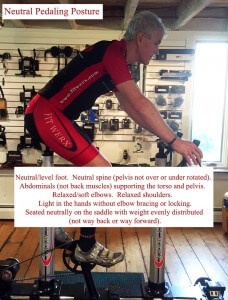 nding the ‘sweet spot’ on the saddle – where the pelvic angle is far enough back to allow the obliques and other abdominal support stabilizers to keep pressure off the front of the saddle while still remaining forward enough for the hamstrings to fire efficiently with minimal strain in the lower back.
nding the ‘sweet spot’ on the saddle – where the pelvic angle is far enough back to allow the obliques and other abdominal support stabilizers to keep pressure off the front of the saddle while still remaining forward enough for the hamstrings to fire efficiently with minimal strain in the lower back.
This was elusive to him. No matter what we did, he was still feeling too much saddle pressure somewhere. I give him credit for letting me know that while he understood the concept, he didn’t feel like he had the proprioception to do what I was saying. Recognizing this is the key to finding the help necessary to overcome it.
Why Couldn’t He Support Himself in a Way to Eliminate his Bicycle Saddle Problems?
If you use your back extensors to stabilize your pelvis and support your upper body in daily life (and, past injury or not, many people do), you probably will do 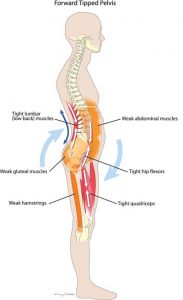 the same on the bike. Doing this on a bike dramatically increases the chances of saddle pressure issues (front and/or back), as well as back, neck, shoulder and hand issues.
the same on the bike. Doing this on a bike dramatically increases the chances of saddle pressure issues (front and/or back), as well as back, neck, shoulder and hand issues.
On a basic level, you don’t need to be a PT to understand that decade’s old postural issues are not likely to change in a few hours during a bike fit. This rider likely doesn’t have the right muscle development or joint mobility to change his posture on the bike in the way that is needed right now. He physically can’t do what he needs to do to be happy on a bike seat right now.
Solutions. What to Do!
While there are no quick fixes to limitations like the ones described above, there is hope for a rider willing to commit to the solution. That hope comes in the form of postural rehab – literally learning how to support your body and move using the “correct” muscle patterns. Seeking out a qualified and skilled postural rehab/restoration specialist (usually a sports based physical therapist, but some muscle based chiropractors could be qualified too) is the place to start.
If you combine a good bike fit with proper technique almost all chronic comfort issues on a bike should have a solution. If you are finding proper fit or riding technique to be elusive, seek out a qualified bike fitter. If you continue to have problems and can’t ride with the technique they recommend, seek out a postural rehab/restoration specialist to help you get to the point where you can.
